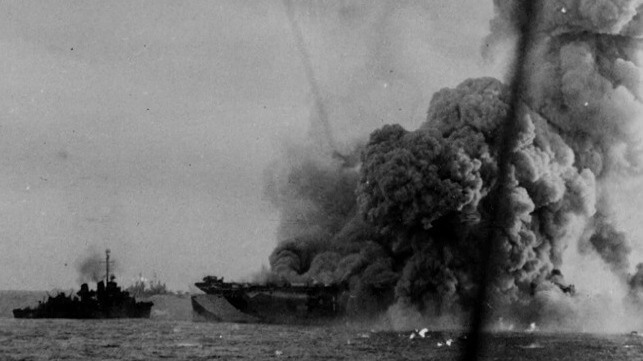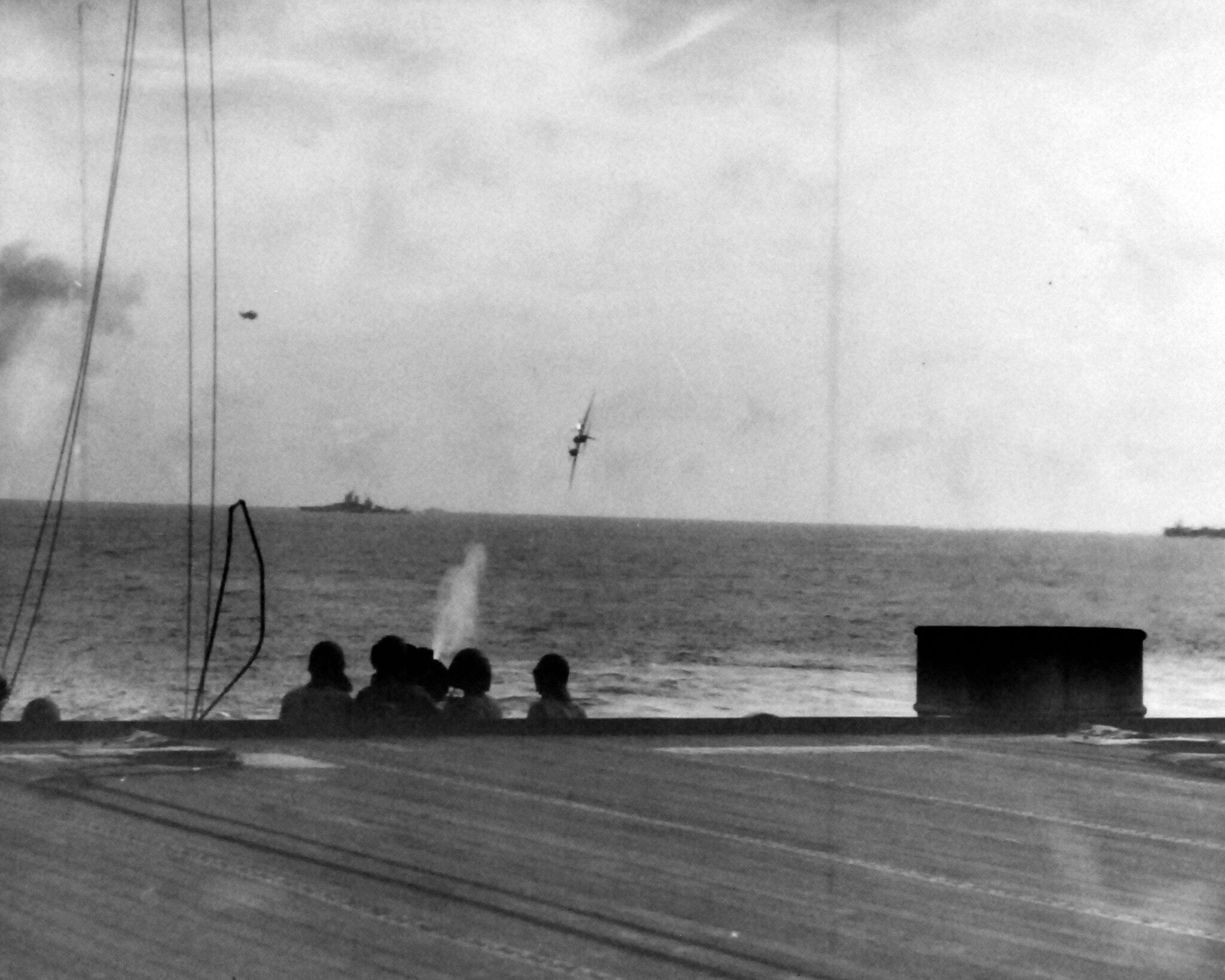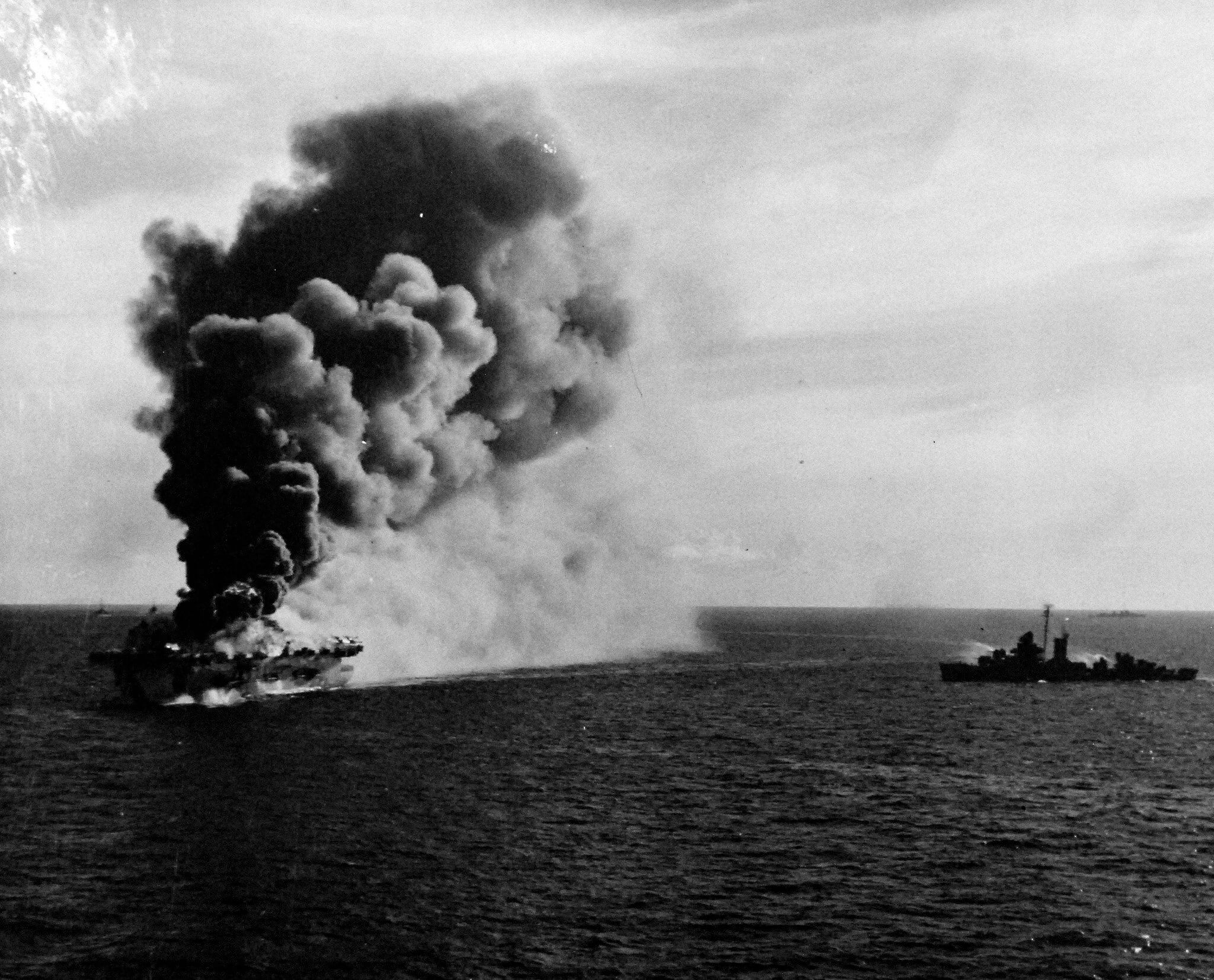U.S. Navy Confirms Wreck Site of WWII Carrier

The U.S. Navy's Naval History and Heritage Command has confirmed the final resting place of the WWII carrier USS Ommaney Bay.
Ommaney Bay was an escort carrier, one of 50 sister ships in the Casablanca class. All were built at high speed at the Kaiser yard in Vancouver, Washington between 1942 and 1944. Ommaney Bay was commissioned in February 1944 and deployed to the Pacific for service in the Mariana and Palau Islands, then provided air cover for the invasion of Leyte. In October, she participated in the famous Battle off Samar, dispatching fighters to successfully attack the Japanese cruiser Mogami.
 Japanese kamikaze plane goes down off Ommaney Bay's port side after a failed attack, Dec. 15, 1944 (NHHC)
Japanese kamikaze plane goes down off Ommaney Bay's port side after a failed attack, Dec. 15, 1944 (NHHC)
In mid-December, while operating off Mindoro, she narrowly escaped an attack by a Japanese kamikaze aircraft (above) - but she would not be so lucky the next time. Less than three weeks later, while transiting the Sulu Sea, Ommaney Bay was hit and destroyed by a twin-engine Japanese suicide plane.
On the evening of January 4, 1945, a single Japanese Yokosuka P1Y bomber passed through the carrier battle group's escort screen. Approaching in line with the glare of the sun, it went undetected until it was too late for Ommaney Bay's crew to react. At 1712 hours, the plane dropped two bombs and crashed into the flight deck. One bomb went through the hangar deck and destroyed a fire main on the second deck. The other exploded in the hangar, igniting multiple aircraft.
Without water pressure for hoses, and with ammunition cooking off in the hangar deck, the fire could not effectively be fought. The crew abandoned ship, and the CO was the last one off at 1812. Six minutes later, torpedoes stored aft aboard Ommaney Bay exploded, destroying the flight deck and showering the nearby water with metal scrap. The stricken vessel was a loss, and she was scuttled by one of her escorts two hours later.
95 crewmembers were killed in the attack, including two rescuers from the destroyer escort USS Eichenberger who were struck by falling debris from the blast. Within a week, seven more crewmembers from Ommaney Bay would be killed in kamikaze attacks on the cruiser USS Columbia in Lingayen Gulf, off Luzon.
 Ommaney Bay on fire after a kamikaze strike, January 4, 1945 (NHHC)
Ommaney Bay on fire after a kamikaze strike, January 4, 1945 (NHHC)
USS Ommaney Bay received two battle stars for her World War II service.
This year, Ommaney Bay's final resting place was confirmed by NHHC’s Underwater Archaeology Branch. The team used a combination of survey information and video provided by two Australia-based firms, Sea Scan Survey and DPT Scuba, to confirm the identity of Ommaney Bay. The data lined up with the location provided by Paul Allen's Vulcan search team in 2019.

that matters most
Get the latest maritime news delivered to your inbox daily.
“Ommaney Bay is the final resting place of American Sailors who made the ultimate sacrifice in defense of their country,” said NHHC Director Samuel J. Cox, U.S. Navy rear admiral (retired). "This discovery allows the families of those lost some amount of closure and gives us all another chance to remember and honor their service to our nation.”
The exact location of the wreck was not disclosed. NHHC noted that the wreck of Ommaney Bay is a U.S. sunken military craft protected by U.S. law and under the jurisdiction of the Department of the Navy, and should be respected as the final resting place of those who were lost with the ship. In recent years, WWII war wrecks in some parts of Southeast Asia have been vandalized by scrappers who target the ships' steel and bronze.
